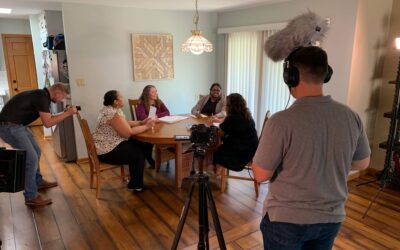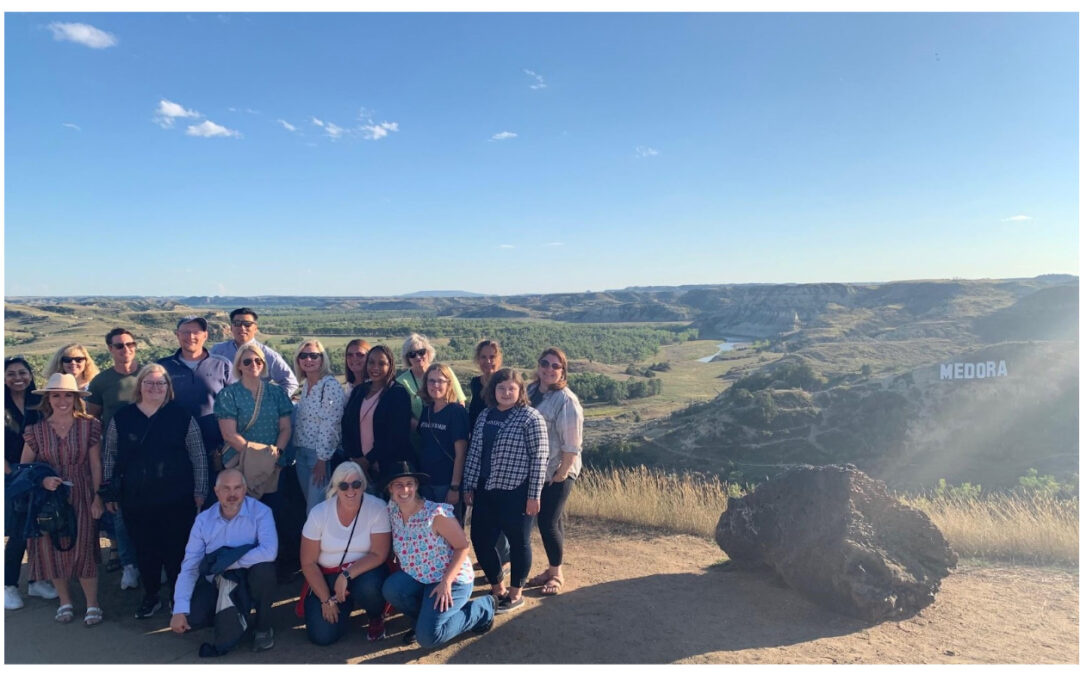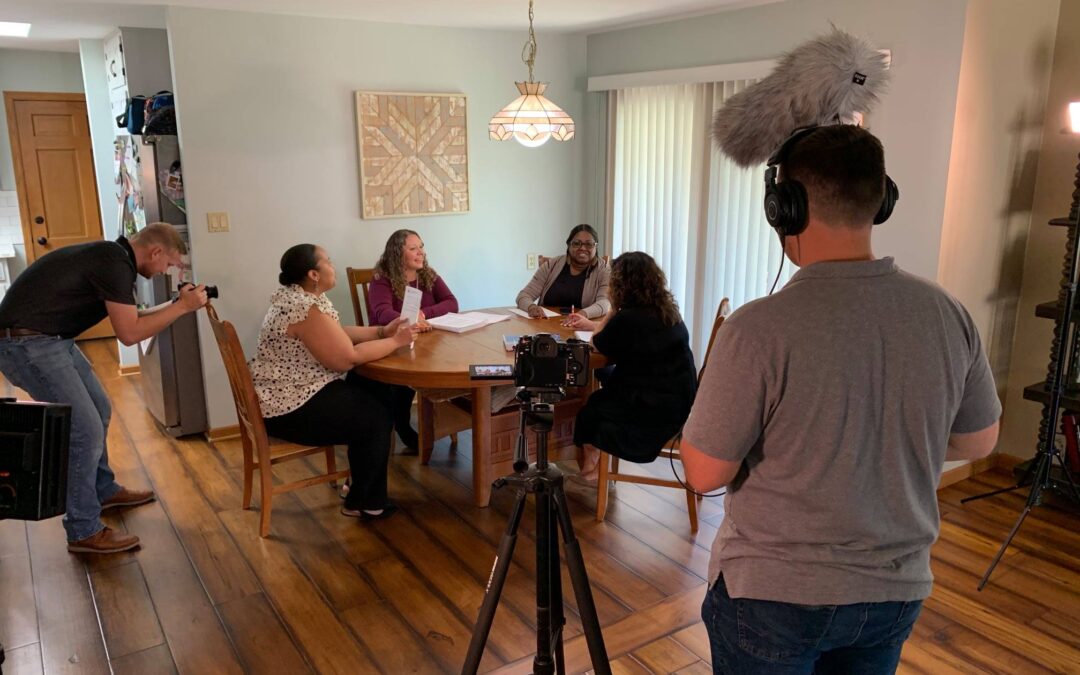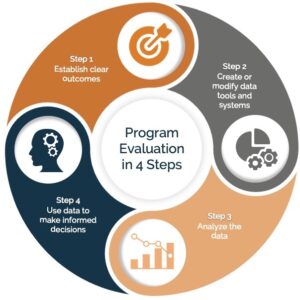
Evaluation is key in determining if your program is making the desired impact. While critical, evaluation can be an overwhelming and intimidating process for organizations. We have worked with several clients to help them embark on the journey of evaluating their program(s). At Transform Consulting Group (TCG), we follow a four-step evaluation process. The first step of establishing clear outcomes can be one of the most difficult. You know what your mission is and you know your vision for a better community, but how do these translate into measurable outcomes?
1. Establish clear outcomes
2. Create or modify data tools and system
3. Analyze the data
4. Use data to make informed decisions
Outputs vs. Outcomes
When determining outcomes, the conversation usually starts with program outputs. Outputs are what your program produces: activities, services, and participants. Tracking, analyzing, and reporting your program outputs is a valuable way of displaying an organization’s work! For example, let’s say an after-school tutoring program served 650 students during the 2017-2018 school year. You could further break that number down by age and frequency of services:
| Age group | Session Frequency | Number of participants | Total number of sessions provided |
| 3rd-5th grades | Weekly for 10 weeks | 320 | 320×10=3,200 |
| 6th-8th grades | Weekly for 15 weeks | 330 | 330×15=4,950 |
| Total tutoring sessions provided= 8,150 | |||
With a few simple calculations, we have a powerful representation of the work this tutoring team has accomplished! However, outputs alone don’t display programmatic impact.
Outcomes go one more step in showing impact. Outcomes are the changes in knowledge or behavior you want your clients to experience due to your program. They are the “so what” of your services and activities. There are three levels of outcomes that you want to set and measure:
- Short-term: What changes in knowledge, attitude, or behavior do you want to see in your clients by the time they complete your program or service?
- Intermediate: What changes do you want to see in client knowledge, attitude, or behavior 6 months-12 months following program completion?
- Long-term: What changes do you want in client knowledge, attitude, or behavior 1+ years after program completion?
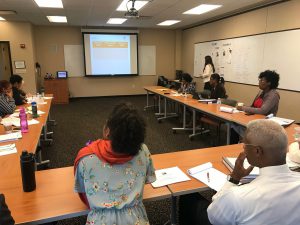
We recently worked with the Center for Leadership Development (CLD) to develop short-term, intermediate and long-term outcomes. They are focused on helping get more students of color to and through postsecondary education. Here are three steps that we used to help them establish clear outcomes that assess the impact of their organization.
1. Align to Organizational Mission and Purpose
When you set outcomes, you want to ensure they align with your organizational mission and benchmarks. CLD’s programming and organizational benchmarks are centered around five principles for success: character development, educational excellence, leadership effectiveness, community service, and career achievement. We helped them establish outcomes aligned with their programs, missions, and critical principles.
2. Review Funder’s Priorities
When receiving grant funding or large donations, organizations often make commitments about what they will accomplish with those funds. Therefore, you want to make sure that future outcomes still align with your current funding priorities and commitments. We worked with CLD to make sure that their many outcomes aligned with the commitments they had made with their current funders.
3. Develop SMART Outcomes
When working with clients to develop outcomes, we follow the “SMART” rubric. We plan to write a full blog to go more in-depth about the SMART rubric, but for now the main takeaway is that they are specific, measurable, achievable, relevant and timely.
One of CLD’s long-term desired outcomes is for 75% of its participants to earn a bachelor’s degree or credential within six years of high school graduation. This outcome aligns perfectly with their mission and funding commitments, but is it SMART? Let’s check!
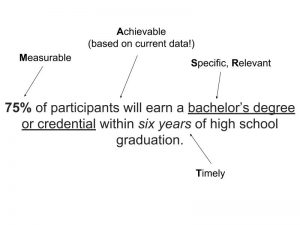 With their clear outcomes established, CLD now has a road map of where they want their participants to go. This road map helps CLD stay on course but also helps to paint a picture of their desired impact for their funders and supporters. Now they are ready to move on to the next step of their evaluation: Creating or modifying data tools and systems!
With their clear outcomes established, CLD now has a road map of where they want their participants to go. This road map helps CLD stay on course but also helps to paint a picture of their desired impact for their funders and supporters. Now they are ready to move on to the next step of their evaluation: Creating or modifying data tools and systems!
If you’re ready to evaluate your program, but are hesitant to take the first step, contact us today!


